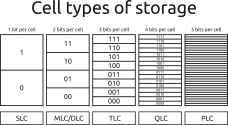Lucent Wafer Manufacturing Virtual Simulation Training System
Hangzhou Luxun Technology Co., Ltd. officially released a wafer manufacturing virtual simulation training system. The system uses virtual simulation and virtual reality technology to conduct high-level simulations of the workshop environment, real equipment, process flow, etc. according to the requirements of the real FAB line environment for 8-inch wafers, mainly including single crystal silicon growth, silicon substrate preparation, oxidation, There are 9 major processes including photolithography, etching, ion implantation, chemical vapor deposition (CVD), physical vapor deposition (PVD), and chemical mechanical polishing (CMP). The system uses a 3D immersive interactive method to allow students to experience and participate in the overall process, parameter setting and other technical processes, and then master the basic principles of the integrated circuit manufacturing process, equipment understanding, process training and parameter setting and other technical skills.
As a well-known domestic integrated circuit testing professional service company and a typical integrated circuit industry-education integrated enterprise, Lanxun Technology adheres to the vision of building a world-class integrated circuit testing base and continuing to empower "China Chip" with advanced technology and innovative models. , focusing on the ecological construction and services of the integrated circuit industry, the integration of industry and education, and talent training, to help the national integrated circuit industry achieve high-level technological self-reliance and self-reliance.
In March this year, Luxun Technology's virtual simulation R&D team conducted a month-long in-depth survey and interviews on the offering status and teaching models of integrated circuit-related professional courses in nearly 100 domestic colleges and universities. In early April, our company officially launched the development of a wafer manufacturing virtual simulation training system to specifically solve the pain points of "high investment, high difficulty, high risk, difficulty in implementation, difficulty in observation, and difficulty in reproduction" in the practical training and teaching process. and difficult problems to effectively realize the informatization, intelligence and modernization of talent training.
The wafer manufacturing virtual simulation training system is a further improvement of the full-link virtual simulation training system. It can effectively link the packaging training system and the testing training system, and ultimately realize a complete closed-loop integrated circuit training operation. At the same time, interested schools can contact our company for product experience and trial!
As a well-known domestic integrated circuit testing professional service company and a typical integrated circuit industry-education integrated enterprise, Lanxun Technology adheres to the vision of building a world-class integrated circuit testing base and continuing to empower "China Chip" with advanced technology and innovative models. , focusing on the ecological construction and services of the integrated circuit industry, the integration of industry and education, and talent training, to help the national integrated circuit industry achieve high-level technological self-reliance and self-reliance.
In March this year, Luxun Technology's virtual simulation R&D team conducted a month-long in-depth survey and interviews on the offering status and teaching models of integrated circuit-related professional courses in nearly 100 domestic colleges and universities. In early April, our company officially launched the development of a wafer manufacturing virtual simulation training system to specifically solve the pain points of "high investment, high difficulty, high risk, difficulty in implementation, difficulty in observation, and difficulty in reproduction" in the practical training and teaching process. and difficult problems to effectively realize the informatization, intelligence and modernization of talent training.
The wafer manufacturing virtual simulation training system is a further improvement of the full-link virtual simulation training system. It can effectively link the packaging training system and the testing training system, and ultimately realize a complete closed-loop integrated circuit training operation. At the same time, interested schools can contact our company for product experience and trial!



